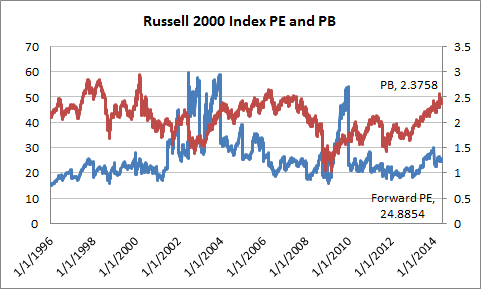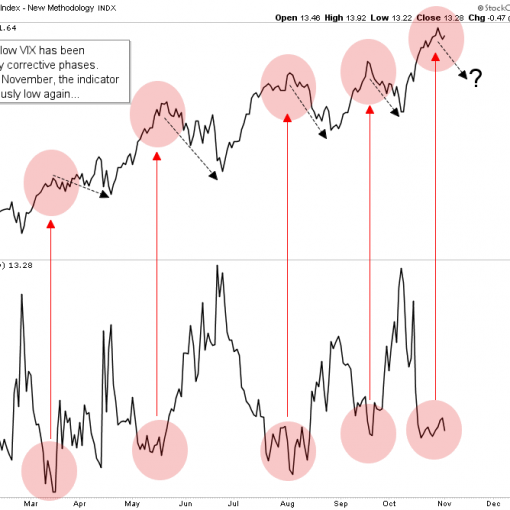Any host who dares suggest to his drunken party-goers that the hour is getting late risks getting thrown out of his own home. Likewise, someone who dares suggest that a secular bull market could possibly, conceivably, someday end risks being reviled and despised.
Bull markets are intoxicating, and the longer they continue the giddier the imbibers become. This substantiates all kinds of tried-and-true market metrics and axioms, from contrarian sentiment indicators to knowing it’s time to get out when the shoeshine boy offers stock tips.
Of course, the inevitability for each round of euphoria is a humbling crash – in a single market session or in an excruciating years-long decline. Either is awful.
The enduring characteristic of a major decline is just as inevitable, as it is recurring. People eventually rationalize each destruction of wealth in their portfolios. If it happens when they’re young, they dismiss it as a one-off and crawl back into stocks. There’s nothing wrong with that. But if they again get drunk at the party, they can easily forget the lesson they learned the first time, or the second time, or even the third.
An older person nearing retirement could panic back into stocks and desperately try to regain the spot from which he was knocked. But panicky investing is never a good idea.
How might we describe today’s party? Is it a good party? And is the host telling us that it’s almost time to go home?
Well, there’s no question that it’s a good party right now. Objective market indices say so. But the quality of a party can also be subjectively measured. Remember this exchange from Seinfeld?
GEORGE: It’s supposed to be a good party.
JERRY: What does that mean? Good dip?
GEORGE: No, there’ll be girls there.
JERRY: There’s girls everywhere.
For Jerry, dip and girls didn’t necessarily a good party make.
They did go to the party, which was held at a house way out on Long Island, with their friend Elaine. But George hooked-up with a woman, took the car, and left Jerry and Elaine stranded. They stayed too long and had to call Kramer to rescue them, but he got lost and Jerry and Elaine spent hours straining to make small talk with their tired and exasperated hosts. Jerry and Elaine were the last ones to leave. It was a disaster.
Moral of the story: Know when it’s time to leave the party, and by what means.
For you, what’s required for a good stock market party? Does it mean simply having an endless, raucous time, with no thought of how or when the gaiety will end? Or does enjoying the party also involve knowing when it’s time to go home and how you’re going to get there?
Okay, this is where you say, “Get out of here, party pooper.” And I respond, “Oh, I’ve already left.”
There’s too much evidence to deny that, as DoubleLine investment chief Jeffrey Gundlach has said, this is all going to end badly. That doesn’t mean it’s going to necessarily end soon – the point is that no one knows when it’s going to end. And it’s not completely dependent upon a change in Fed policy. Any political incident (North Korea, Syria), financial accident (Cyprus, Italy), or natural disaster (a New York City hurricane, Japan tsunami) could trigger a steep market fall.
The fact is that today’s record-breaking stock market is artificially inflated and therefore quite tenuous. On CNBC a couple of weeks ago, venerable investor Jim Rogers expressed unrepentant skepticism about today’s lofty stock prices that are mostly the result of central banks’ easy money policies. (Think that ubiquitous Interactive Brokers commercial with the columned edifices relentlessly churning out cash upon the world.) “If you give me a trillion dollars,” Rogers said, “I’ll show you a good time, too.”
Pimco’s Bill Gross broadened that theme in his April epistle, crediting the investing fame of Warren Buffett, George Soros and himself in part to the happenstance of living in a favorable “epoch.” But, he wonders, what if today’s epoch were to change? “What if perpetual credit expansion and its fertilization of asset prices and returns are substantially altered?” Gross asks.
The party goes on for now, but I’m not having as good a time as I was awhile ago. I guess I’m sobering up. And I’m not going to drink any more at this party. I don’t know when the party will end, but it will end. And I want to make sure I know how I’m getting home.
Therefore, I’m largely (70 percent) in fixed-income investments at this point, with 6 percent in cash, 4 percent in gold and 20 percent in equities.
If you want to roughly replicate this allocation, here’s an easy way to do it using mostly funds:
For the fixed-income portion, limit the maturities. If you don’t, you could get caught in a bond fund that loses substantial value when interest rates rise. Put 50% in the Vanguard Short-Term Investment-Grade Bond Fund (VFSTX) or Vanguard’s Short-Term Tax Exempt Bond Fund (VWSTX). Use the tax-exempt funds outside of an IRA or other tax-deferred account.
Having significantly protected half of your money, you can reach for a bit more yield with the other 20 percent of your fixed-income sector. You could put a portion in the Vanguard Limited-Term Tax-Exempt Fund (VMLTX). For more yield, invest in Mr. Gundlach’s DoubleLine Total Return Bond Fund (DLTNX), which yields over 5% (as of 4/5/13) and has an average maturity of 3.67 years and an average duration of 2.23 years. That’s a healthy yield with modest risk metrics, but its best advantage is the fellow by whom it’s managed.
You could also diversify within your fixed-income assets percent by investing in Vanguard’s GNMA bond fund (VFIIX), which yields 2%. Or you could allocate a portion to the Stable High Yield model that I manage at Covestor. Through April 4, it has returned 12.7% over the past 12 months.
For the stock portion (20%), you can stick it all in the SPDR S&P 500 ETF (SPY). That way you’ll participate in any interim boosts from the stock market. If you do want to include an individual stock or two, pick among good dividend stalwarts like Altria (MO), Kinder Morgan (KMP), Plains All American (PAA), Verizon (VZ) and AT&T (T).
Now, there’s at least one well-respected voice out there who is forecasting U.S. deflation, but most Fed policy dissidents believe inflation is the higher probability. We’ll take their side by allocating 4 percent to the SPDR Gold Shares (GLD). Some pundits think gold has had its day and that silver is the better play, so the iShares Silver ETF (SLV) is another option.
The remaining 6 percent cash stash is for particular opportunities that you might come upon as you leave the party. Sleep well.
The investments discussed are held in client accounts as of April 1, 2013. These investments may or may not be currently held in client accounts. The reader should not assume that any investments identified were or will be profitable or that any investment recommendations or investment decisions we make in the future will be profitable.




